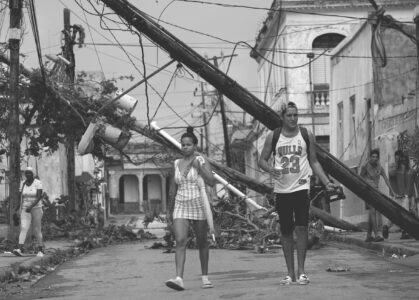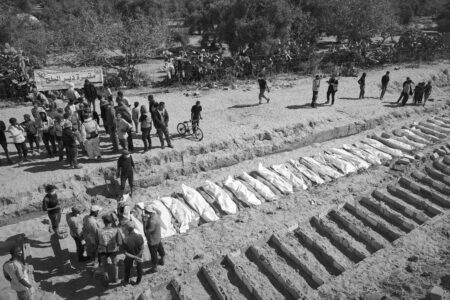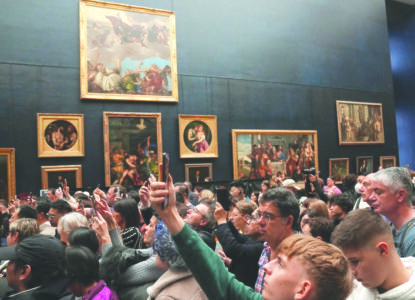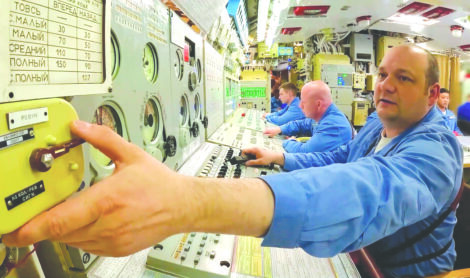Powerful hurricane leaves Cairibbean path of destruction
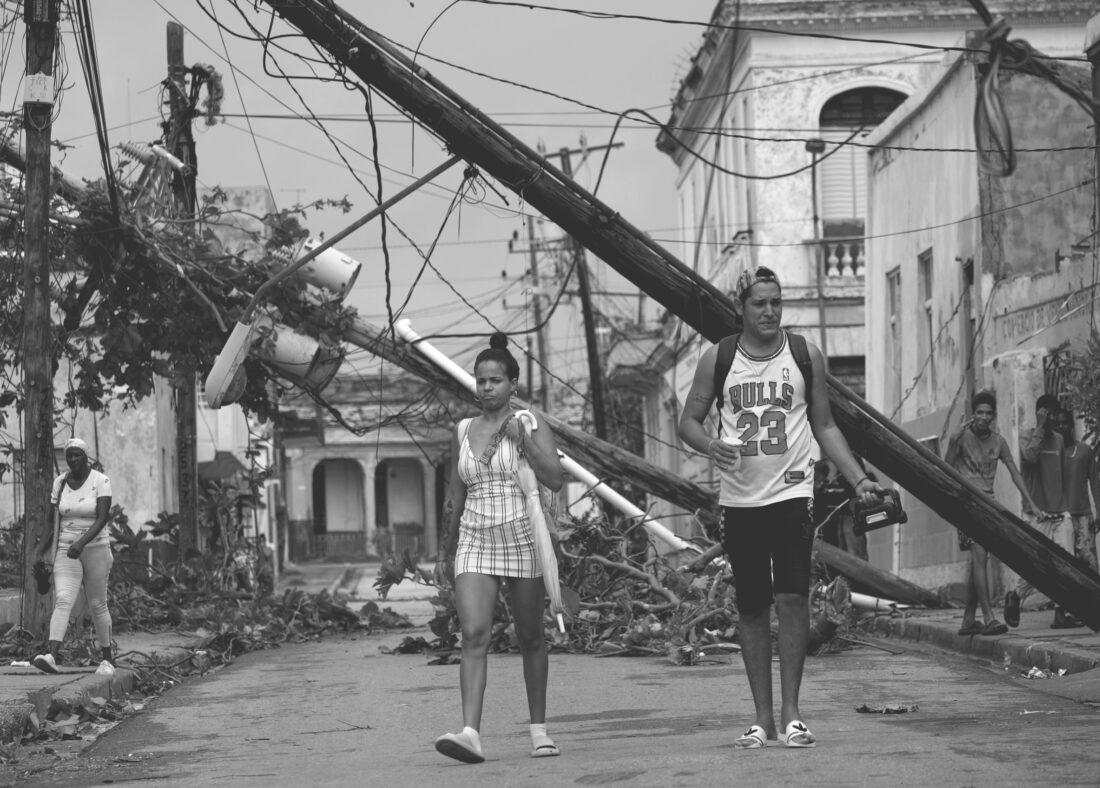
Pedestrians walk in Santiago de Cuba on Wednesday in the aftermath of Hurricane Melissa. (AP photo)
SANTIAGO DE CUBA, Cuba — Hurricane Melissa left at least dozens dead and widespread destruction across Cuba, Haiti and Jamaica, where roofless homes, toppled utility poles and water-logged furniture dominated the landscape Wednesday.
A landslide blocked the main roads of Santa Cruz in Jamaica’s St. Elizabeth parish, where the streets were reduced to mud pits. Residents swept water from homes as they tried to salvage belongings. Wind ripped off part of the roof at a high school that serves as a public shelter.
“I never see anything like this before in all my years living here,” resident Jennifer Small said.
The extent of the damage from the Category 5 hurricane was unclear Wednesday as widespread power outages and dangerous conditions persisted.
“It is too early for us to say definitively,” said Dana Morris Dixon, Jamaica’s education minister.
Melissa made landfall Tuesday in Jamaica with top winds of 185 mph, one of the strongest Atlantic hurricanes on record, before weakening and moving on to Cuba, but even countries outside the direct path of the massive storm felt its devastating effects.
At least 23 people have died across Haiti and 13 are missing, Haiti’s Civil Protection Agency said in a statement, revising the death toll downward. Twenty of those reported dead and 10 of the missing are from the southern coastal town of Petit-Goâve, where flooding collapsed dozens of homes. The number of dead and missing in Haiti often fluctuate in the early days after major natural disasters.
In Cuba, officials reported collapsed houses, blocked mountain roads and roofs blown off buildings Wednesday, with the heaviest destruction concentrated in the southwest and northwest. Authorities said about 735,000 people remained in shelters.
“That was hell. All night long, it was terrible,” said Reinaldo Charon in Santiago de Cuba. The 52-year-old was one of the few people venturing out Wednesday, covered by a plastic sheet in the intermittent rain.
Jamaica assesses
In Jamaica, more than 25,000 people were packed into shelters Wednesday and more streamed in throughout the day after the storm ripped roofs off their homes and left them temporarily homeless. Dixon said 77% of the island was without power.
Outages complicated assessing the damage because of “a total communication blackout” in areas, Richard Thompson, acting director general of Jamaica’s Office of Disaster Preparedness and Emergency Management, told the Nationwide News Network radio station.
“Recovery will take time, but the government is fully mobilized,” Prime Minister Andrew Holness said in a statement. “Relief supplies are being prepared, and we are doing everything possible to restore normalcy quickly.”
Cuba rides it out
People in the eastern Cuban province of Santiago de Cuba began clearing debris around the collapsed walls of their homes Wednesday after Melissa made landfall in the region hours earlier.
“Life is what matters,” Alexis Ramos, a 54-year-old fisherman, said as he surveyed his destroyed home and shielded himself from the intermittent rain with a yellow raincoat. “Repairing this costs money, a lot of money.”
Local media showed images of the Juan Bruno Zayas Clinical Hospital with severe damage: glass scattered across the floor, waiting rooms in ruins and masonry walls crumpled on the ground.
“It has been a very complex early morning,” President Miguel Díaz-Canel wrote on X. “As soon as conditions allow, we will begin the recovery. We are ready.”
Toward Bahamas
Wednesday afternoon, Melissa had top sustained winds of 100 mph and was moving northeast at 15 mph, according to the U.S. National Hurricane Center in Miami. The hurricane was centered about 110 miles south-southeast of the central Bahamas.
Michael Brennan, director of the National Hurricane Center, said the storm began affecting the southeastern Bahamas on Wednesday. Authorities in the Bahamas were evacuating dozens of people from the archipelago’s southeast corner ahead of Melissa’s arrival.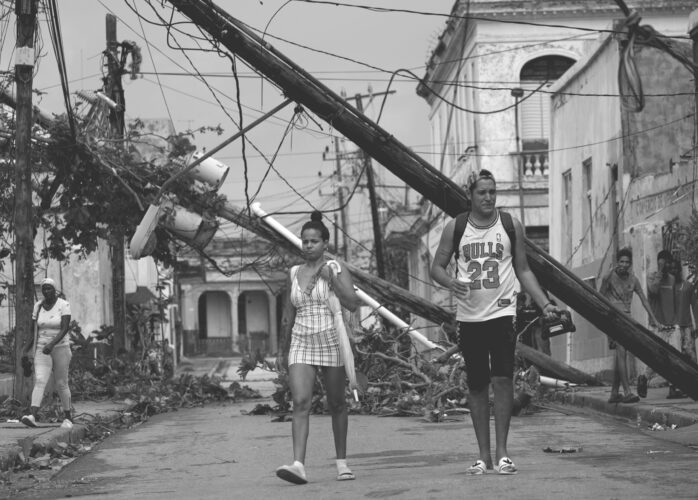
___
Rodríguez reported from Havana, Myers from Santa Cruz, Jamaica, and Sanon from Port-au-Prince, Haiti. Dánica Coto in San Juan, Puerto Rico, and Safiyah Riddle in Montgomery, Alabama, contributed to this report.


